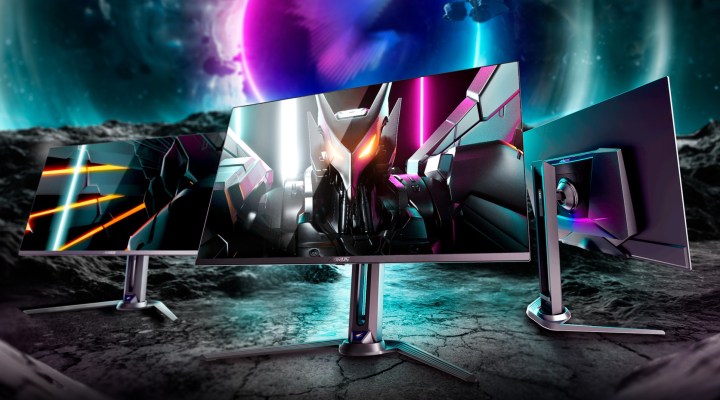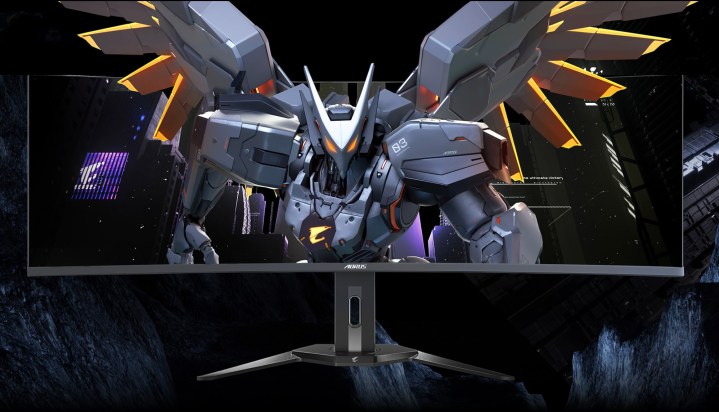
Gigabyte already makes some of the best gaming monitors, but its upcoming lineup of QD-OLED Aorus displays is arguably even more exciting. However, its rivals Asus and MSI have held an edge in terms of warranty — something that’s crucial for a QD-OLED panel that could be prone to burn-in. Gigabyte now addressed the issue, extending its warranty to match those of the competition.
Gigabyte first showcased the new monitors earlier this year. Initially, they were all given a standard one-year warranty. MSI and Asus also stuck to offering a one-year warranty, but not for long. What follows is an interesting look at how all the top brands in the gaming market affect one another.
Shortly after revealing its 2024 displays, Asus extended the warranty for its QD-OLED monitors for up to two years, with burn-in protection included. MSI couldn’t be left behind on this, and it actually one-upped Asus by including three years of warranty instead, while still providing OLED burn-in protection. As a result, Asus extended its warranty yet again, this time up to three years. Meanwhile, Gigabyte’s range remained with just one year of coverage, but that’s changing now.
Gigabyte announced that it is also extending the warranty on the following QD-OLED monitor models: CO49DQ, FO32U2P, FO32U2, FO27Q3, MO34WQC, and MO34WQC2. Although Gigabyte didn’t refer to any extra burn-in effect protection directly, it appears that the warranty will also cover it.

“The extended three-year warranty aims to provide users with peace of mind and protection against potential panel image retention issues, ensuring a flawless gaming and entertainment experience over a longer period,” said Gigabyte in its announcement, which was later shared by TechPowerUp.
The lineup is looking promising, but it’s not here yet — although we know the basic specs. Perhaps the most interesting model is the Aorus FO32U2P, which is a 32-inch 4K monitor with a refresh rate of 240Hz. It stands out because it’s the first QD-OLED panel with full UHBR20 (Ultra High Bitrate) DisplayPort 2.1 support. This will give the monitor a boost in transfer speed, reaching 20Gbit/s per lane, adding up to a total of 80Gbit/s. It’s currently the only monitor that can achieve that, at these specs, without Display Stream Compression (DSC).
The rest of the lineup includes a 49-inch 5,120 x 1,440 144Hz display, a 32-inch 4K 240Hz model with DisplayPort 1.4, a 27-inch 1440p 360Hz model, and two 34-inch 3,440 x 1,440 240Hz models. Although we know that the monitors will hit the shelves in the first half of 2024, the exact release dates and prices are yet to be announced.



